The core study referenced in this aticle was a pilot with about 30 healthy adults, using a single exposure of 670 nm red light. It showed a ~27–30% reduction in blood sugar response.
However, experts warn this is promising but not conclusive, with small sample size and more research needed
A New Frontier in Metabolic Health

Emerging science is beginning to shed light—literally—on a surprising tool in the battle for better blood sugar control: red light therapy. Known for its skin-healing and anti-aging effects, red light therapy (RLT) is now being explored for a very different reason—its ability to support healthy glucose metabolism.
In 2024, a groundbreaking human study revealed that just 15 minutes of red light exposure could significantly reduce blood sugar spikes after a meal. While this may sound like science fiction, the research is real—and the results were impressive.
Let’s take a closer look at what the study found, how it works, and what it could mean for people seeking to improve metabolic health or prevent type 2 diabetes.
A Landmark Study on Red Light and Glucose
In a controlled clinical trial at University College London (UCL), 30 healthy adults were given a standard oral glucose tolerance test on two separate occasions. On one of those occasions, participants received 15 minutes of red light therapy (670 nm wavelength) on their upper backs 45 minutes before consuming glucose. On the other occasion, they did not receive red light.
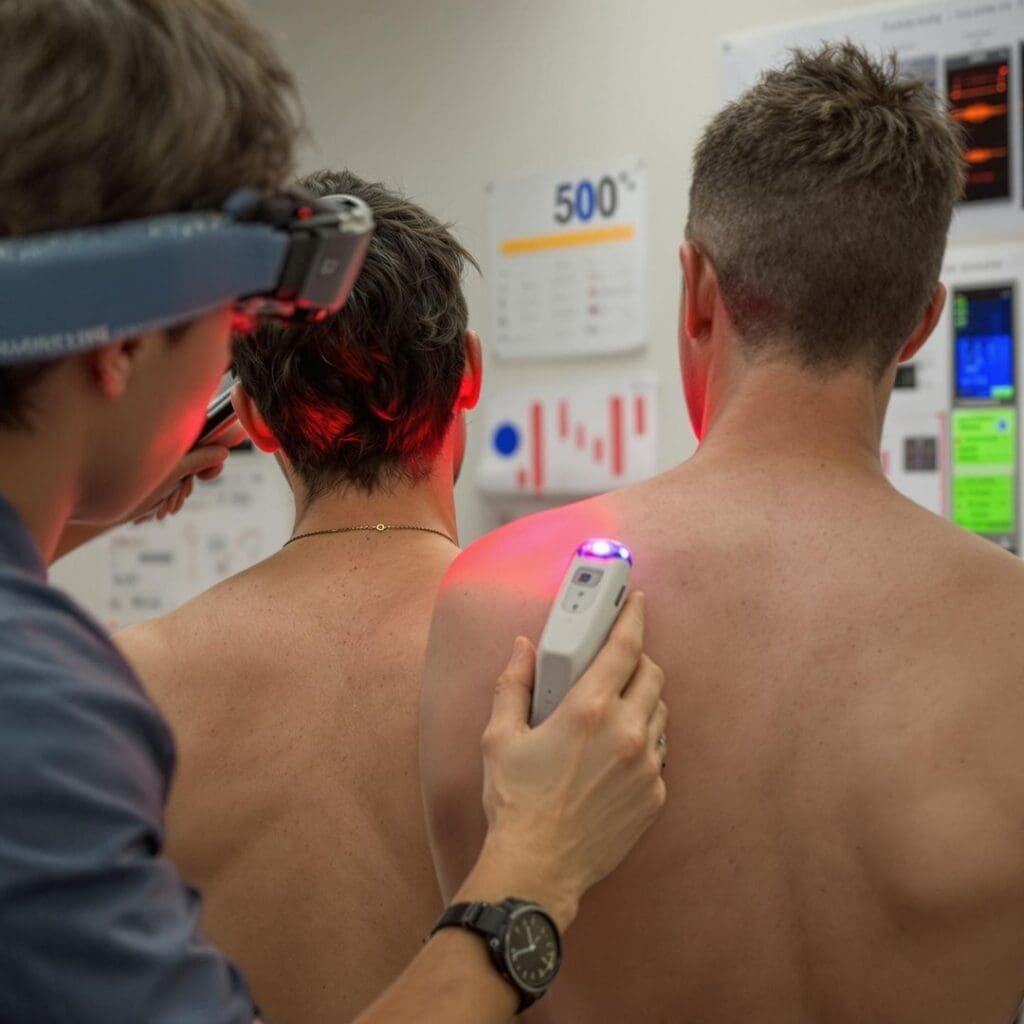
The results were striking:
- Average blood sugar levels rose 27.7% less when participants received red light beforehand.
- Peak glucose levels were about 7.5% lower than when no light was used.
A single session of red light therapy, applied to the skin, led to a meaningful reduction in how much participants’ blood sugar spiked after consuming glucose. The researchers concluded that red light could be stimulating cells to burn sugar more efficiently, leading to lower circulating glucose after eating.
As Dr. Michael Powner, the lead author, explained:
“Our study has shown that we can use a single, 15-minute exposure to red light to reduce blood sugar levels after eating.”
While the study was conducted on people without diabetes, the implications are exciting—especially for those at risk of insulin resistance or managing prediabetes.
How Does It Work?
The proposed mechanism is rooted in cellular biology.
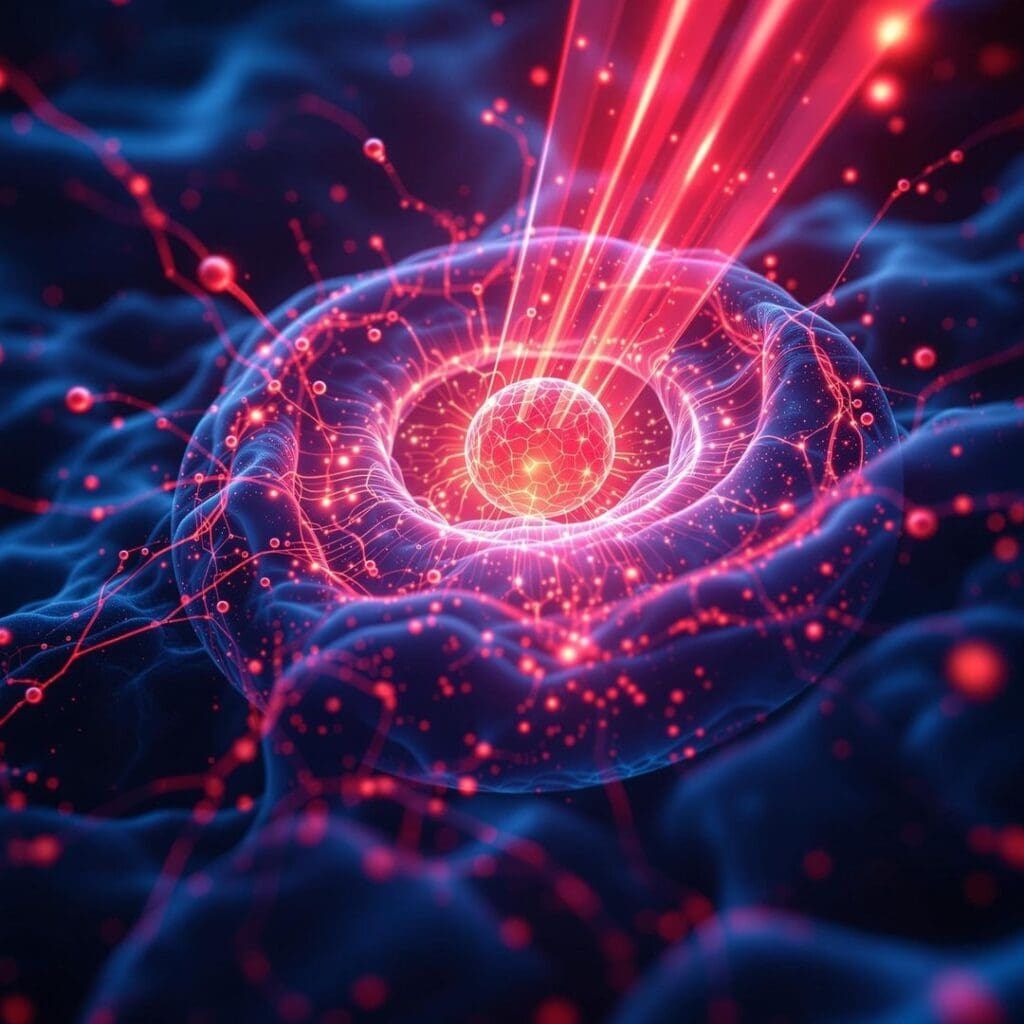
Red and near-infrared light, particularly around 670 nanometers, are absorbed by mitochondria—the energy-producing centers in our cells. This light stimulates a key mitochondrial enzyme called cytochrome c oxidase, which increases ATP production (cellular energy).
When mitochondria are activated, cells demand more fuel, and that fuel is often glucose. The idea is that red light stimulates cells—particularly in muscle and skin—to pull more sugar from the bloodstream to meet this increased energy demand.
This would explain the reduction in both glucose spikes and total blood sugar levels after meals.
In the UCL study, researchers also measured exhaled carbon dioxide, which is a byproduct of cellular energy production. Participants who received red light therapy exhaled more CO₂, indicating increased metabolic activity at the cellular level.
Systemic Effects from Local Light
One especially intriguing finding: the red light was only applied to the upper back, yet the effect on blood sugar was system-wide.
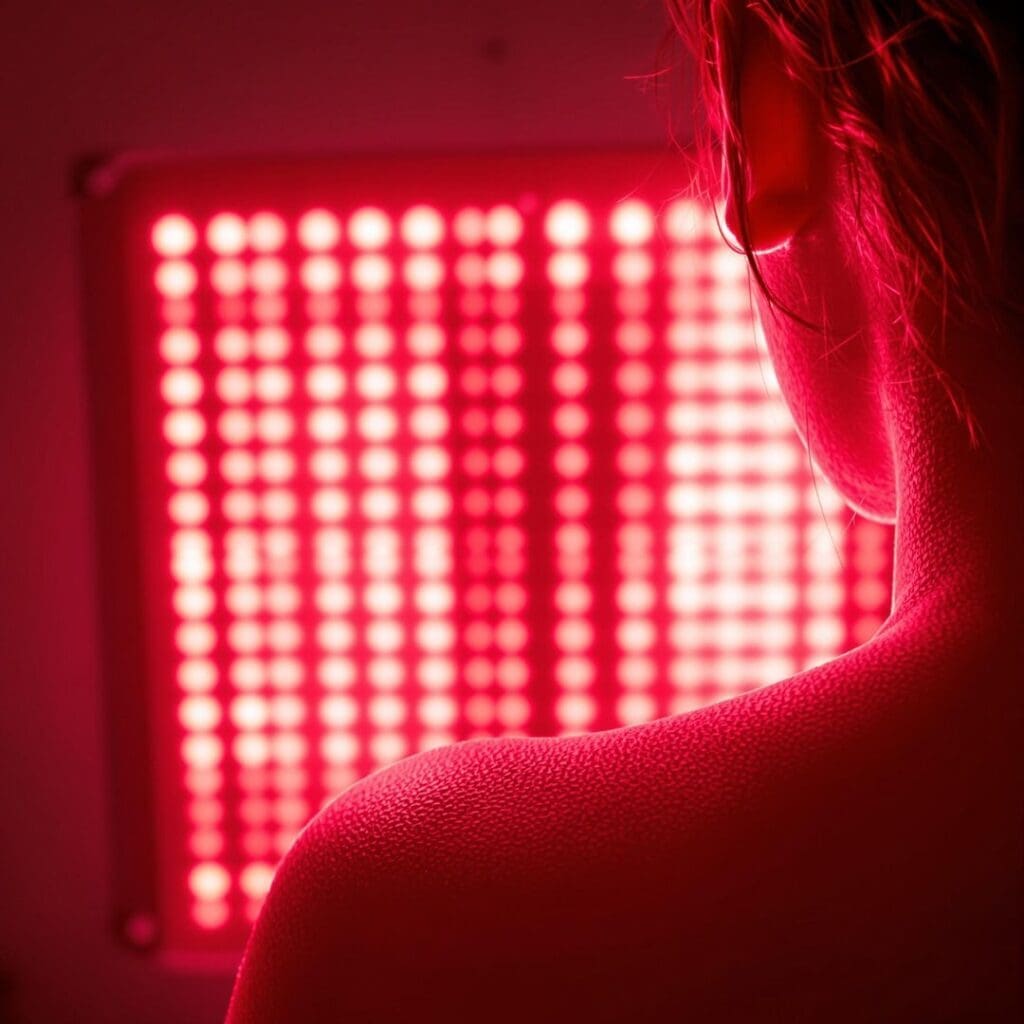
This supports the idea of a systemic or “abscopal” effect—where stimulating one part of the body leads to effects throughout the system. Scientists believe that intracellular signaling triggered by red light can cascade across tissues, improving metabolism in organs far from the treatment site.
If confirmed in larger trials, this would mean that brief exposure to red light on a single body area—like the back, abdomen, or thighs—might help regulate blood sugar throughout the body.
Potential for Diabetes Support
While no one is claiming red light therapy is a cure for diabetes, its potential as a complementary metabolic support tool is drawing attention.
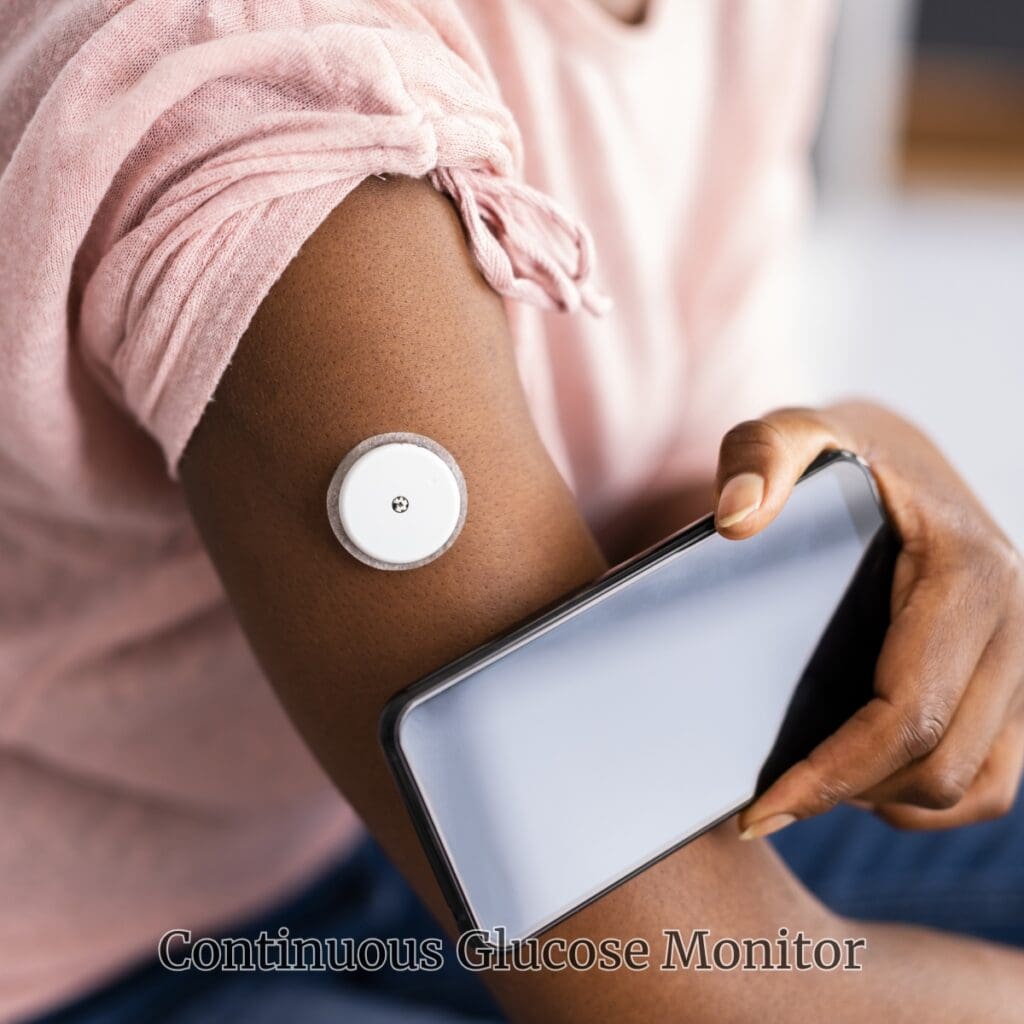
- In type 2 diabetes, the body’s tissues become resistant to insulin, impairing glucose uptake. Red light may help “re-sensitize” tissues like muscle by improving mitochondrial efficiency and boosting glucose transport into cells.
- In animal studies, diabetic mice exposed to red light showed improved glucose tolerance, lower fasting blood sugar, and better insulin sensitivity.
- In early human research, people with type 2 diabetes who received RLT before meals had reduced post-meal glucose curves, especially when combined with oral medication.
The idea is not to replace traditional diabetes treatments, but to enhance them. RLT could be used alongside medication, diet, and exercise as a non-invasive, low-risk method to flatten blood sugar spikes and reduce long-term complications.
A New Look at Light and Metabolism
Beyond formal red light therapy devices, this research raises a deeper question: are we getting enough healthy light in daily life?
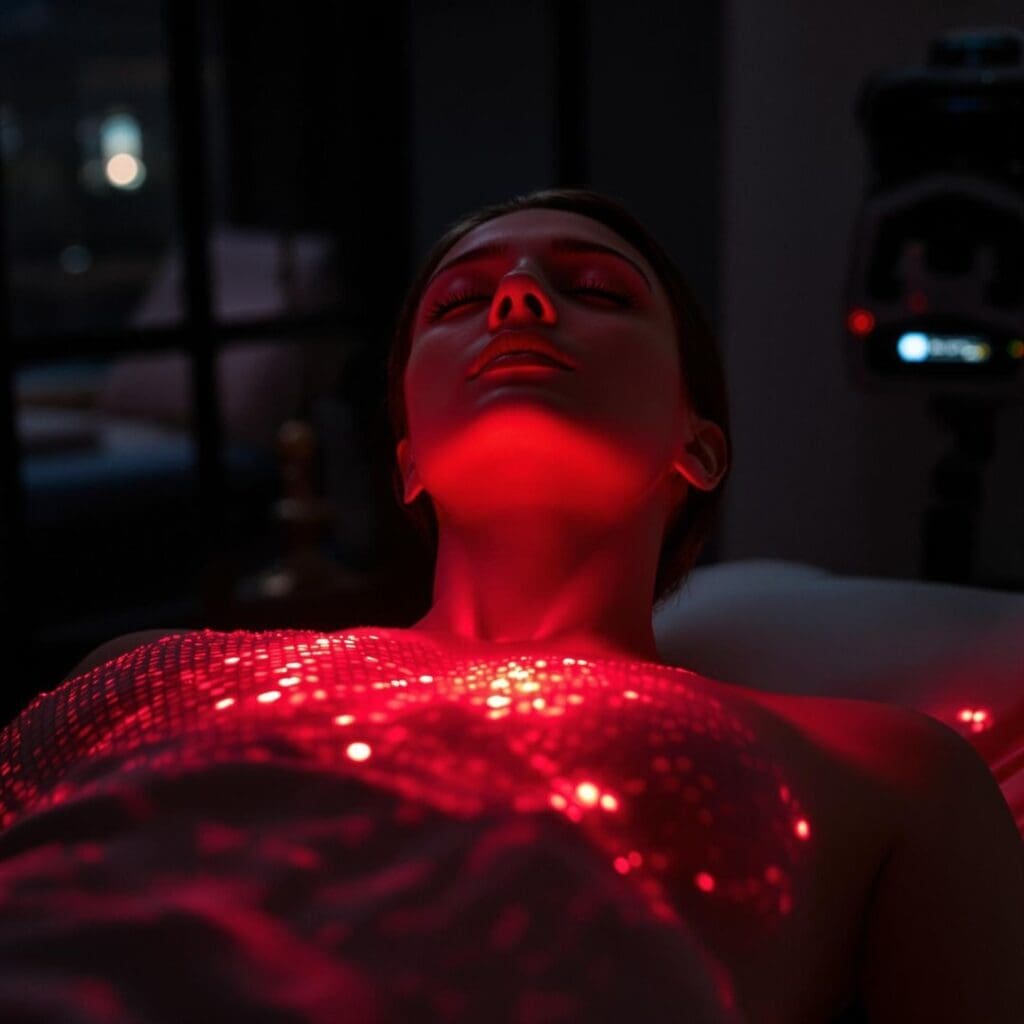
Modern lighting—like LED and fluorescent bulbs—emits mostly blue wavelengths and lacks the red and near-infrared spectrum found in natural sunlight. Our ancestors evolved under full-spectrum light, but today we’re surrounded by light that may be disrupting circadian rhythms and metabolism.
Some scientists, including the authors of the UCL study, have speculated that our red-light-deficient environments may be contributing to chronic conditions like type 2 diabetes by undermining mitochondrial health.
This makes a strong case for:
- Getting morning sunlight exposure
- Using full-spectrum or red-emitting light indoors
- Exploring RLT panels as a wellness tool
The body evolved to interpret light as a signal for metabolism, hormone regulation, and energy use. Restoring natural light balance may be as essential as eating well or exercising.
What You Can Do Now
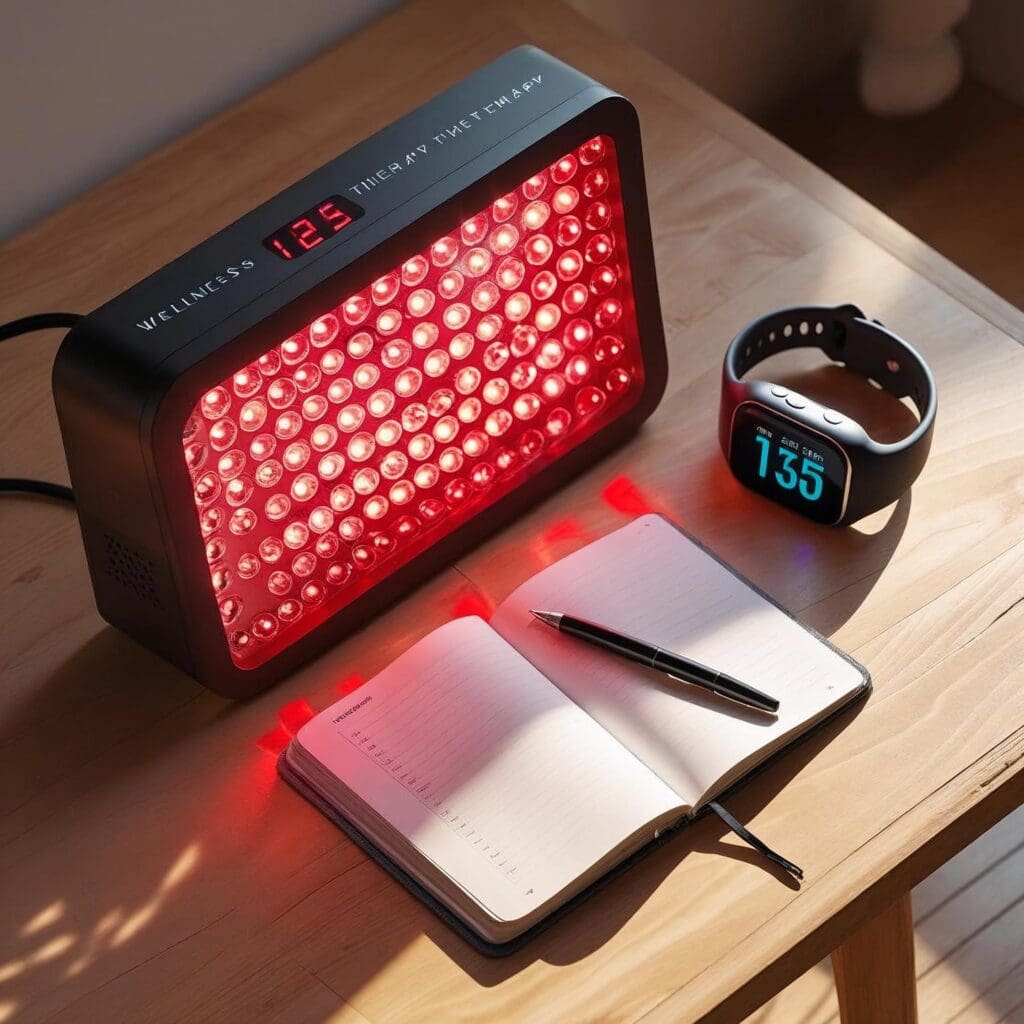
While red light therapy is still being studied for metabolic health, there’s little downside to incorporating it as part of a healthy lifestyle. If you’re curious about experimenting with RLT, consider the following tips:
- Use a panel with wavelengths between 660–850 nm
- Apply it to large muscle groups or the back for 10–15 minutes
- Use it in the morning or pre-meal if targeting metabolism
- Be consistent—aim for 3–5 sessions per week
Always speak with your healthcare provider before changing your treatment plan, especially if you have diabetes or are taking medication. RLT should complement—not replace—your existing health strategy.
If you’re looking to try red light therapy for general wellness or metabolic support, we recommend starting with UK-compliant panels from trusted brands. (Affiliate links available.)
And if you’re serious about improving your energy, metabolism, and focus—watch this space. We’re building a free download kit to guide you step-by-step.
Red Light Therapy + Blood Sugar Response Deep Dive Podcast
FAQ. Red Light Therapy, Blood Sugar.
-
-
Is Natural Sunlight Enough to Improve Blood Sugar Like Red Light Therapy?
Sunlight contains red and near-infrared light, so regular exposure may support metabolic health. However, red light therapy offers concentrated, consistent dosing. Natural light: Broad-spectrum, variable intensity RLT: Narrow-spectrum, targeted therapeutic doseTogether, they offer synergistic benefits—but only […]
-
-
-
-
-
-
-
-
Conclusion

Red light therapy is a promising, drug-free tool for supporting metabolic health. While research is still emerging, the early evidence shows that just 15 minutes of red light exposure can help the body manage blood sugar more effectively after eating.
Whether you’re dealing with prediabetes, metabolic fatigue, or just want a smarter way to stay energized—light could be part of the solution.
As scientists continue to explore the relationship between light, mitochondria, and glucose, one thing is clear:
It’s time to see light not just as illumination—but as nutrition for your cells.
📚 Sources
- Sources:
- Powner, M.B. & Jeffery, G. Journal of Biophotonics (2024) – study demonstrating a 27.7% reduction in post-meal blood glucose after 670 nm red light exposure in healthy adults pubmed.ncbi.nlm.nih.govucl.ac.uk.
- UCL News (Feb 21, 2024) – summary of the above study and its implications for diabetes controlucl.ac.ukucl.ac.uk.
- Mammoser, G. Healthline (Feb 26, 2024) – “Red Light Therapy Lowers Blood Sugar by Nearly 30%” – news article discussing the study and expert commentaryhealthline.comhealthline.com.
- Vidovszky, A. diaTribe (Nov 25, 2024) – overview of RLT for diabetes, including effects on neuropathy, wound healing, and blood glucose in early studiesdiatribe.orgdiatribe.org.
- Scontri, C.M.C.B. et al., Journal of Biophotonics (2023) – clinical trial in type 2 diabetics showing dose-dependent glucose reduction from 830 nm photobiomodulationpubmed.ncbi.nlm.nih.govpubmed.ncbi.nlm.nih.gov.
- Gong, L. et al., Aging (Albany NY) (2021) – animal study demonstrating that RLT improved hyperglycemia and insulin resistance in diabetic mouse models via enhanced muscle glucose uptakepubmed.ncbi.nlm.nih.gov.
- Jeffery, G. commentary in UCL News – remarks on blue vs red light in modern life and the potential impact on blood sugar and diabetes riskucl.ac.uk.
- Frontiers in Endocrinology (2024) – review “Diabetes in Spotlight: Photobiomodulation” noting no adverse effects or hypoglycemia risk with RLT in studies to datefrontiersin.org.
- Additional references on RLT for neuropathy and wound healingdiatribe.orgdiatribe.org, and general mechanisms of photobiomodulationhealthline.compubmed.ncbi.nlm.nih.gov.
Disclaimer:
The content on this website is for informational and educational purposes only. It is not intended to diagnose, treat, cure, or prevent any disease. Red light therapy devices are not FDA-approved for managing blood sugar levels. Always consult a qualified healthcare provider before beginning any new health protocol.